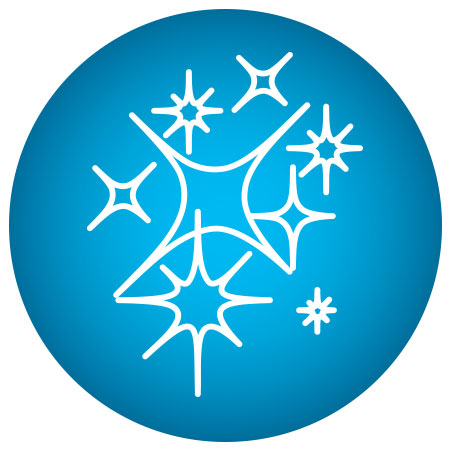The Flame of Femininity

Esther is the guide for the feminine rising in kedushah

Vashti was the first recorded feminist. Achashveirosh makes a party. Well, what do you know, she makes her own! Midrash Rabbah (Esther 3:9) makes it very clear: Just as Achashveirosh opened six treasuries, so did Vashti... Just as he went to all kinds of expense, so did she... Just as he feasted after the style of Eretz Yisrael, so did she... Just as he wore the high-priestly garments, so did she...
Anything a man can do, a woman can do. And she can do it better! What follows is gender war. He commands her to come, she insults him terribly, and he burns with rage. Haman steps in. He ends Vashti’s feminist movement and enacts oppressive laws against women.
Haman represents evil. Evil is anti-feminine because the feminine represents the Shechinah, Hashem’s presence which dwells on earth.
The Megillah continues with the story of another woman, Esther. In contrast to Haman, Mordechai doesn’t try to keep her small; he raises her to maturity. But she still looks up to Mordechai as her guide. Whatever direction he offers, she follows.
Then, the decrees against the Jewish People are issued, and Mordechai tells her to approach the king. She responds that it’s dangerous; he tells her that, nevertheless, she must do this. She declares three days of fasting and prayer. Here, Esther and Mordechai function as equals; their dialogue is perfectly symmetrical.
The Baal HaTanya teaches, “In the [post-Messianic] future… she who had previously been below him… will now surpass him…” After Esther is successful, she connects Mordechai to the king, who gives him Haman’s estate.
Esther is the guide for the feminine rising in kedushah. When she’s small, she obeys; when she’s equal, she negotiates respectfully; when she’s bigger, she gives.
Mordechai supports Esther’s rise because he knows that it symbolizes the rise of the Shechinah. It foretells of a time when v’nahapoch hu, things will flip. The material world will shine the light of Hashem so brightly, it will rise even higher than the spiritual worlds.
From Purim Bursts 2 by Rebbetzin Sarah Yehudit Schneider, based on the Arizal, the Leshem, Rav Tzaddok HaKohein, and other sources.
Enlightened
Mrs. Kleinman, you were the first mechaneches to answer a question for this column. “What do our girls need most?” we asked. You answered, “To know that they are a chelek Eloka mima’al.” Since then, our world’s gone haywire. What would you respond today?
- If anything, our post-corona world needs to acknowledge this fundamental even more. As the world becomes more confusing, and the lack of moral values obfuscates our vulnerable girls, the only sustaining pillar of clarity is an ironclad belief in ein od milvado, which the Baal Shem Tov defines as “there is no metziyus, existence, other than Hashem.”
- Rav Tzaddok HaKohein tells us that just like we have to believe in Hashem, we have to believe in ourselves! When we judge ourselves by our achievements, personality, or social standing without recognizing that it’s all Hashem, there is always room for insecurities because of the ebb and flow of our circumstances. This fickle self-esteem isn’t authentic or reliable; it will be constantly challenged.
- An essence rooted in ein od milvado and a commitment to do ratzon Hashem, will enable a girl to make good choices. This has to be the foundational teaching in the home throughout childhood.
Shaindy Kleinman has been teaching and mentoring girls for over four decades. She currently teaches life skills and chinuch in several Boro Park high schools.
The Light of Adar
At my stage, I don’t have time or headspace for learning deeply about the Yom Tov, and I can’t force myself to “feel happy.” Instead, I try to make the atmosphere exciting.
Although I’m usually quite fastidious, when Adar comes, I allow the costumes out all month! We buy funny hats and sheitels, and let the kids dress up all the time (in their non-Purim costumes), and keep the music going! Sometimes this brings me into the Purim mode, sometimes not. I’m doing my best for this stage of my life.
—Shaindy L., Mom of 10
Step-by-step guide to developing yiras Shamayim and ahavas Hashem
Part 4
Sometimes we meditate, but don’t feel anything. That’s okay. The Baal HaTanya explains that we just have to do our best. If all you can achieve through meditation is a basic sense of kabbalas ol malchus Shamayim, that’s enough.
Mesillas Yesharim teaches that avodas Hashem requires a lot of intelligence. The derech of the Baal HaTanya is an example of a technique that educates and elevates the entire person.
The following meditation can be done even when it’s difficult to concentrate; it’s especially useful for when walking or sitting outside.
Look up at the sky. Feel the distance and vastness. Look ahead and see the beauty. Think of the complexity of whatever creature happens to be in front of you, even if it’s only gas molecules in the air. Hashem fills all worlds. He’s in this space. Feel the awe. Hashem is right here, next to me…
Another meditation that’s even easier is to very slowly think of the words of a shevach part of davening.
Of course, don’t limit yourself to the meditations given in this four-part series. Think of your own ideas; the possibilities are endless.
The Cash Register and the Notebook
My parents a”h both were Holocaust survivors. We weren’t wealthy, but our home was filled with the riches of love and devotion to Hashem, Torah, family, and the Klal.
My mother worked in a very popular children’s store, treating everyone with respect and devotion, often redting shidduchim between customers.
We first heard of the extent of her kindness when her boss asked to speak at her levayah. He related that when my mother realized that a customer couldn’t afford a necessary item, she’d quietly approach them, telling them that the store was having an unadvertised sale for loyal customers. My mother would then ring up an amount she believed was affordable, recording the difference in a notebook she kept by the register. She would ask her boss to deduct the amount from her meager salary.
My mother regularly purchased clothing for the grandkids, so her boss just assumed these clothes were for them. It wasn’t until right before her retirement that her boss discovered what she’d been doing for years. He said there was no way to calculate how many families in need she helped clothe.
My mother was four feet, ten inches and weighed 100 pounds, but her heart was enormous.
—Gittel Moeller
(Originally featured in Family First, Issue 782)
Oops! We could not locate your form.

